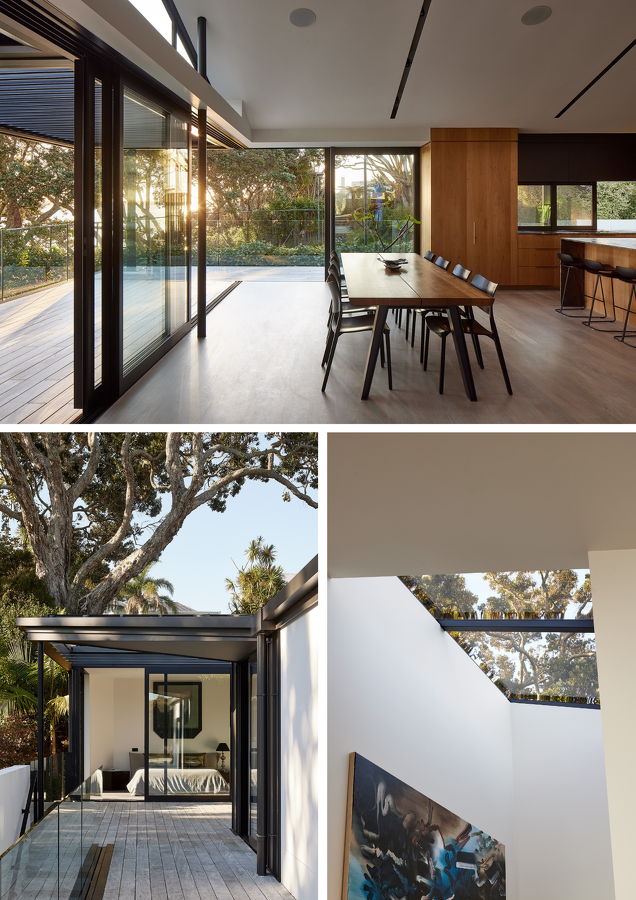How the Building Code changes affect windows - Windowmakers x ArchiPro
Date: 1 Dec 2022
Following the sprawling Building Code changes announced last year, there have been several shifts in thermal efficiency minimums for doors and windows. Paul Keen from Windowmakers explains what the changes mean going forward.
In November last year, the Ministry of Business, Innovation and Employment (MBIE) detailed its new requirements for thermal efficiency in the construction industry under the Building Code. The intention of the review was to ensure that every home built in Aotearoa is warmer, drier, healthier and more energy efficient than its predecessors – and to bring existing homes up to standard.
R-values for floor, wall and roof insulation, as well for the thermal efficiency of doors and windows, were generally raised across the country; for the latter, the warmest climate zones have seen an interim increase in November 2022, which will be followed by an additional increase in November 2023. This means by the end of 2023, all parts of the country will have a similar minimum level of window insulation requirement.
With exterior joinery responsible for between 35 – 50% of heat loss in a building when using aluminium joinery, it was identified as an area that needed minimum standards raised.
What are R values and U values?
Paul Keen of Windowmakers explains: “R-Values are the measure of how much heat a material resists, while U-Values are a measure of a materials thermal conductivity,” he says. “Therefore, when assessing these values in trying to achieve good thermal efficiency, you’re looking for a high R-Value, and a low U-Value.
“Exterior joinery is typically described using an R-Value and measures both the glass and perimeter frame in combination with one another.”
What’s changed?
What do these changes mean for homeowners, architects and builders?
“The aim is for New Zealand to build warmer, drier, healthier homes,” says Paul. “To do that, the thermal requirements and standards of a variety of materials needed to be increased. H1 is a clause in the Building Code that specifically deals with the thermal efficiency of residential buildings – and it covers wall, floor and roof insulation, as well as the thermal performance of windows and doors.”
Construction in climate zones 1 and 2, which include the upper North Island as well as parts of Taranaki and Hawke’s Bay, must now install windows and doors that meet a minimum R value of 0.37. The date for this deadline was November 3, 2022 – but these climate zones will soon have a new minimum R value of 0.46, which must be met by November 2, 2023.
The rest of the country (climate zones 3-6) will also have an interim increase. These zones will be required to reach a minimum R value of 0.37 for all windows and doors by November 3, 2022, and increase this to R0.46 (zones 3-4) and R0.50 (zones 5-6) six months later, on May 1, 2023.
This means by November next year, all windows in any new housing in Aotearoa must meet the increased minimum performance levels.
The Building Code changes and you: what you need to know
So how do stakeholders achieve these new standards – and what do they need to know when it comes to windows and doors?
“If you’re in Southland for example – a region within zone 6, the coldest climate zone – by May next year you’ll need to have windows and doors with an R value of 0.50,” says Paul. “This means you’ll either need uPVC joinery, or you’ll need to use thermally broken frames, with high-performing low-E glass, as well as argon gas inside the double glazing.”
Non-thermally broken aluminium framed windows – even those with double glazed low-E glass and argon gas – will not comply with the new standards, as they cannot meet the new minimum R-Value requirements.
So if you’re planning to use aluminium, it is most likely that you’ll need to make sure it’s thermally broken, Paul says. And Windowmakers has worked hard to ensure that all of their aluminium products will be compliant with the new Building Code standards, he adds.
“We are a fabricator of aluminium window products that are designed by Architectural Products Limited, or APL,” says Paul. “And they’re currently doing a revamp of all their products, in line with these H1 changes.
“By the end of next year, I imagine we won’t be fabricating cold frames (non thermally-broken aluminium) any longer. Everything we offer will be thermally broken, in line with what the market will need.”
This will culminate in the release of the new APL Architectural range of windows and doors – which combines high-performance, durable fixtures that also deliver an aesthetic appeal.
The range was designed specifically with architectural homes and apartments in mind – featuring clean surfaces, continuous sightlines, and square-edged forms for a modern, contemporary look. The range of windows and doors can be tailor-made, and can feature durable box-shaped window frames and awning sashes that sit flush with the façade.
Words by Nick Forrester – ArchiPro
View article on ArchiPro.

